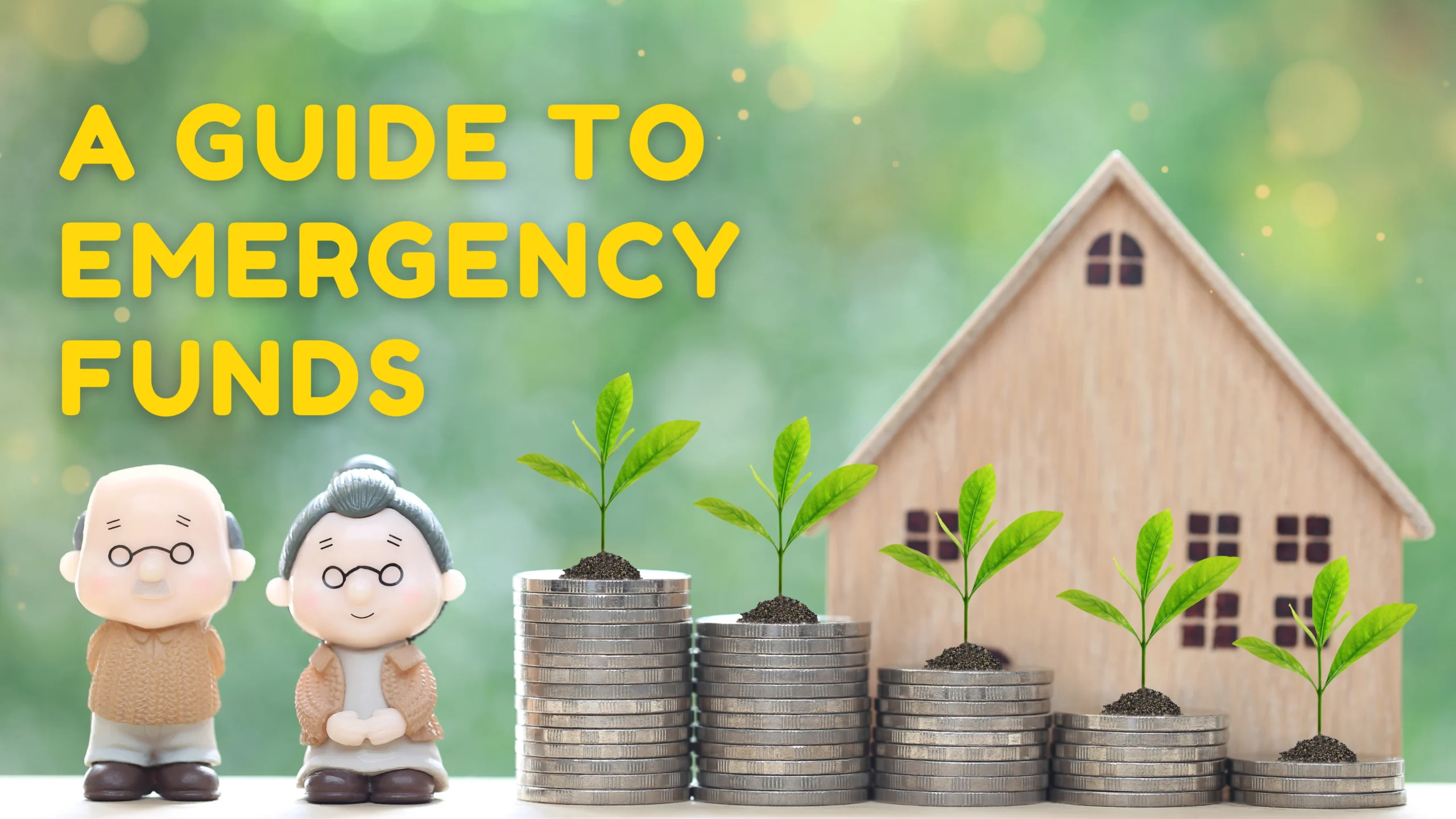Nearly 80 percent of us would struggle to manage monthly bills if our paycheck gets delayed by only a week. According to CNBC, 65 percent of Americans don’t have an emergency fund. So, most of us are living from paycheck to paycheck, with little savings for emergencies that may come up.
Anything can happen—medical or dental problems, home repairs, unplanned travel, car troubles. If money is always coming in and going out of your pocket, paying for these extra costs becomes stressful. The National Center for Biotechnology Information (NCBI) recently held a study, and results point out that financial problems elevate stress levels, anxiety, and depression.
Having an emergency fund, even if it’s just a small amount, can help you tackle unexpected expenses in a better way. At any point, a stash of money set aside just for financial emergencies buys you enough time until you figure out other arrangements.
You may be just one sudden expense away from falling into a financial crisis. And we get it, sometimes it is hard to set aside savings when you’re already struggling to make ends meet. But, there are a few ways to move about this issue. You can actually plan for your future finances and build an emergency fund while managing the limited funds. We’ll teach you how.
What does living from paycheck to paycheck mean?
When all your income goes into paying necessary bills like mortgage, rent, utilities, groceries, transportation, internet, etc., you’re living from paycheck to paycheck. You have little to no money that you can call savings. If an emergency comes up, you won’t be able to cover it comfortably.
This situation is the opposite of financial freedom, and it can happen to anyone. It doesn’t matter if you earn more or less. If you’re spending beyond your means, and you can’t handle urgent money needs without your next incoming paycheck, you’re in this cycle of earning and spending.
To get out of this constant distress, you need some management and planning with your money.
What is an emergency fund? Is it really important?
An emergency fund is an amount of money you keep aside for urgent needs. Using this money, you’re able to handle “spending shocks” like getting a root canal, or getting a broken windshield fixed, and remain okay even when “income shocks” like losing a job occur.
We’re sure most of you would want to have that sort of financial security. Noone wants to feel the struggle related to money problems, not if they can avoid it. And building an emergency fund helps you get that peace of mind. If tomorrow you lose your job, or your pet gets ill, you’ll still be financially stable, and your life wouldn’t feel like a whirlpool of survival threats.
You won’t need to borrow money, or take out funds from your retirement account. You can still pay for living expenses and it’ll be much easier to recover financially in case things go south. This way, you’re safeguarding yourself from having to take on high-interest debt or sell your investments at unfavourable prices in the market.
Emergency fund vs. savings
Emergency funds and savings are often understood to fall in the same light. They’re not the same. An emergency fund is like a safety net, specifically for handling any financial ups and downs you may have. Whereas, savings are dedicated towards a purchase you want to make in the future.
Saving money to buy a house is different from saving money to handle urgent medical expenses that could happen. You make an emergency fund so you’re not forced to take on debt.
How much emergency fund should I have?
Everyone has a different lifestyle, income, and monthly expenses. Generally, as a rule of thumb, it is best to have savings that can get you through 3-6 months of living expenses in your emergency fund. For starting off, aim to keep aside at least $1,000. Then you can gradually move up.
The best way to handle any situation is to split your emergency fund into 2 portions. One should be for the long-term (possibly in a separate bank account that remains untouched), and another for short-term emergencies accessible in cash or its equivalents. For example, if your monthly expenses are around $5,000 you can keep $15,000-30,000 in savings.
You can also use the emergency fund calculator to know the amount you should save.
Creating a realistic budget
For saving money, you need to be on a budget right? Only then can you get an idea of where you can cut down on costs. And budgets help us stay disciplined with our purchases. Many people make a budget but don’t stick to it. Some create an unrealistic budget that leaves no room for emotional spending (which is natural, with all of us).
To actually be able to save significantly, you need to sit down and be honest. Make a diary if you have to, put pen to paper, and start jotting down your monthly expenses. Group them into different categories. Rent. Groceries. Transportation. All of it, every little bit.
Once you have this data, you’ll understand if there are areas where you can keep it tight. Also, you can track your fixed vs. variable expenses here. You can simply use the expense tracker templates in Google Sheets for this task, or download apps that let you input your expenses and track them over time for free. Rocket Money is a popular choice among users.
The 50/30/20 rule
An effective way to spend is assigning 50% of your monthly income for needs (rent, utilities, groceries, internet, transportation, debt), 30% for wants (dining out, subscriptions, movie tickets), and the rest 20% for savings and investments. This way, you’re not completely wiped out on your monthly paycheck. You’re spending on the things you want, but you’re saving too. If you do this consistently enough, over time you will have savings without feeling like you’re living frugally.
Breaking the paycheck-to-paycheck-cycle
First of all, align your monthly budget with your payday, instead of the 1st of every month. For example, if your employer credits the pay on the 12th of each month, try keeping your payment dues around the 15th of every month. This way, you have some free room for functioning.
Next, automate your debt payments so you don’t forget them. You’ll save yourself from unnecessary charges. Also, where to keep your emergency funds? If you can, use a separate savings account for these funds, and up automatic transfers to it each month. This reduces your urge to spend all of it away. Invest in retirement plans like the 401(k).
Give yourself little treats from time to time. It will give you a sense of financial freedom. Remember that the goal here is not to starve yourself of every single joy. You just need to be a little management-minded about your spending habits, that’s all.
How do I start an emergency fund with a tight budget?
Even small contributions towards your emergency fund can go a long way. You don’t need to save a huge amount right here and now, but start early even if it’s just a small amount. Treat your emergency fund like a monthly bill. Realistically, whatever amount is possible, put it into it.
You can start with saving manageable amounts like $25 every week, and if your income increases, you can make the amount higher. There are always certain areas where we can temporarily save, identify them. Use any bonuses or tax refunds to go into your savings.
Balancing debt & savings: What comes first?
Well, this is a tricky one. While the most intuitive answer will be “prioritise debt first,” it is hollow advice. During the time you’re paying off your credit card balances, loan payments, mortgages, etc. if an emergency happens, you’ll again be pushed into taking on more debt—that too at higher interest rates since your debt-to-income (DTI) ratio may be more.
Therefore, you should start building an emergency fund first. Sure, savings for certain financial goals can wait, but we’re talking about an emergency fund here. Build that first. Make only the minimum monthly payment required on your loans, and use the remaining for an emergency fund.
Managing emergencies for the meantime
When you don’t yet have an emergency fund, there are some options you can consider that are of help. Having health, auto, or life insurance is best. The insurance company pays for emergencies like medical bills, car repair, etc. Apart from that, you can get a short-term loan from any reputed lender online for covering up any costs you can’t afford.
Should I take loans for urgent money problems?
It depends. Do you have enough time to build up savings? If you don’t then taking an emergency loan is not a choice, it is necessary. Consider the cost of the loan and then decide whether you can afford it or not. If the interest rates are too high, borrowing from friends or family could be more feasible in the long run. However, if you have an excellent credit score, and you’re qualifying for better terms, then taking a loan may not be so bad after all.
Best Rate Check: Only the best online lenders
Best Rate Check is an online marketplace where you, the borrower, can connect with safe lenders online. With just 2 details (your email, and loan amount), you can pre-qualify with multiple lenders at once. The interest rates offered are capped at 36 percent.
So you can enjoy lower interest rates, and fair terms for getting a loan anytime, anywhere. There are no credit score, collateral, or documentation requirements at our end. Since there are no credit checks, individuals with poor scores are welcome to apply too.
After getting approved, you can compare different loan offers made to you. There are no obligations to borrow, if you don’t find the terms fit, you can simply refuse to sign the loan agreement and cut the lender off. The best part? Our services are free to use.
Financial mindset for long-term stability
Once you have built an emergency fund, then what? When someone gets rich, the responsibility that follows is “maintaining the position”. And that is the same with emergency finances you’ve saved for. The next thing is to maintain a savings-oriented mindset for long-term stability.
Continue to prioritise budgeting and saving. This process is a continuous one. You’ve not arrived at some magic destination. You’ll need to still stay consistent to not fall into the old patterns of living paycheck to paycheck. The longer you are on this path, the closer it brings you to financial freedom. It requires continuous effort and discipline to get into the driver’s seat of your finances.
Frequently Asked Questions
If you’re barely saving anything, all your monthly income goes towards paying for bills or debt payments, you’re living from paycheck to paycheck.
There are a few ways you can cut down on expenses on a slim budget:
- Track your spending, minimize wherever you can.
- Create a budget using the 50/30/20 rule.
- Cancel unnecessary subscriptions.
- Reduce your utility bills, like electricity and internet.
- Buy groceries in bulk to save money on that.
- Negotiate bills with internet, phone, etc. providers.
- Refinance your debt using debt consolidation loans.
- Cut down on entertainment costs.
Apps like Quicken Simplifi, PocketGuard, Empower Personal Dashboard, Credit Karma, and Budget Card can be of use for tracking your budget.
Yes! It is advised that you set up automatic transfers for building an emergency fund. Even before you get a chance to spend the money, it will be saved into another account. This helps you stay disciplined and on track with creating the fund.
If you’re able to qualify for favourable terms like lower interest rates and repayment periods that align with your financial planning, then yes, taking payday loans, personal loans, and cash advances is a viable option you can choose for emergencies.
For a short-term loan, you would want to make sure that the lender is licensed in your state, offers the loan terms transparently, has valid contact information on their website, and isn’t pressuring you to quickly sign any documents.



